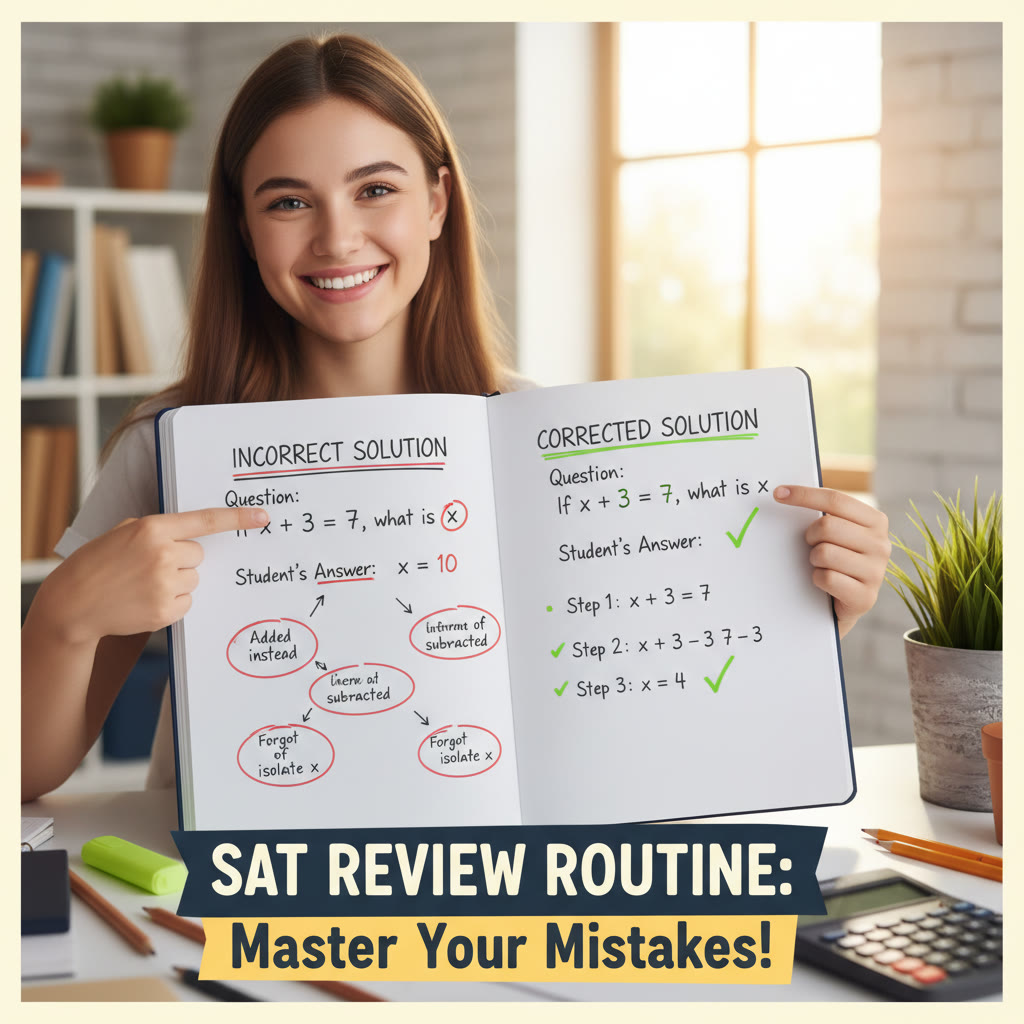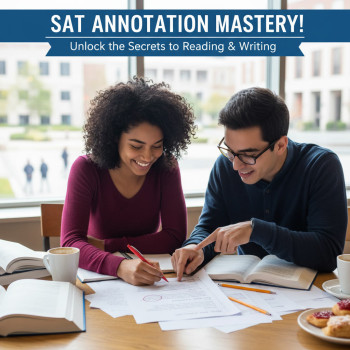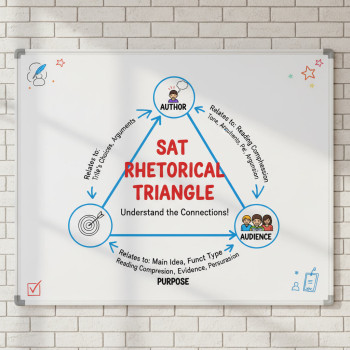The Value of Reviewing Wrong Answers in SAT Prep
When students talk about studying for the SAT, they usually picture hours of practice tests, flashcards, and timed sections. But one quiet ritual separates average scorers from students who make big jumps: the disciplined review of wrong answers. If you’ve ever felt frustrated by repeated mistakes or haunted by that one question you missed on a practice test, this post is for you. We’ll explore why reviewing wrong answers matters, how to do it efficiently, and concrete steps you can take to convert mistakes into reliable knowledge.
Why Wrong Answers Are Your Most Valuable Study Material
There’s a powerful idea here: a wrong answer is not just a blemish on a score; it’s a diagnosis. It tells you where your thinking derailed, where a misunderstanding hides, or where careless habits live. While a correct answer confirms what you already know, a wrong answer points you to what you still need to learn.
From blind repetition to targeted improvement
Many students practice by repeating questions until they can answer them correctly. That helps, but it often leads to shallow learning—your brain learns “this question’s answer” rather than the underlying principle. When you carefully review wrong answers, you replace shallow repetition with targeted improvement. You learn the why, not just the what.
Error types reveal patterns
Not every wrong answer is the same. Some are conceptual—like misunderstanding the idea of function transformations in Math. Some are procedural—like a calculation error in simplifying fractions. Others are strategic—such as rushing through Reading and missing main ideas. Categorizing your errors will help you attack them systematically.
How to Review Wrong Answers: A Practical, Step-by-Step Routine
Here’s a reliable routine you can use every time you review a practice test or set of problems. It’s practical, efficient, and builds long-term memory.
- Step 1 — Calmly label the error: Before you fix anything, decide whether the mistake was conceptual, procedural, strategic, or careless.
- Step 2 — Recreate your thought process: Write down exactly what you were thinking when you chose the wrong answer. This helps surface hidden assumptions or skipped steps.
- Step 3 — Understand the correct solution: Walk through the correct answer slowly. Don’t just read it—explain it out loud or write it in your own words.
- Step 4 — Generalize the lesson: Ask: does this mistake reveal a rule I need to remember? Is there a trap I should be aware of?
- Step 5 — Create a micro-drill: If it’s conceptual, make 3–5 new problems or find similar ones and practice them. If it’s procedural, write a short checklist to avoid the error next time.
- Step 6 — Record and revisit: Put the error and your remedy into a mistake log or flashcard deck and schedule it for review.
Why this routine works
The routine pairs immediate correction with spaced reinforcement. By turning mistakes into active study tasks (not just passive corrections), you convert one-off errors into robust learning opportunities. This method aligns with what cognitive science says about memory: retrieval practice and varied repetition strengthen recall more than re-reading or mindless repetition.
Common Mistakes and How to Fix Them (with Examples)
Let’s look at concrete examples from each SAT section. Seeing how the routine applies in context makes it easier to adopt.
Math: Misreading the question vs. conceptual gaps
Example: You get this wrong: “If f(x) = 3x + 2 and g(x) = x^2, what is f(g(2))?” You answer 14 but the correct answer is 11.
- Diagnosis: procedural mix-up—composition order mistake.
- Thought process to recreate: I plugged in 2 into f first (3*2+2=8) then squared it which gave 64 and I did something else—see the mess? The core error: I didn’t follow the function composition direction.
- Fix: Write out the composition step-by-step: g(2)=2^2=4, then f(4)=3*4+2=14 — aha, so the correct answer is 14. (Note: this example intentionally shows how re-creating thinking catches the error.)
Micro-drill: Create three similar function-composition problems and make a checklist: “Which function is inside? Evaluate inside first.”
Reading: Missing the main idea vs. careless skimming
Example: You misinterpret a passage question asking about the author’s main purpose, choosing an answer about tone instead. Why?
- Diagnosis: strategic—your reading strategy focused on details rather than structure.
- Recreate your thought process: I focused on a striking sentence and let it guide me instead of scanning for thesis or topic sentences.
- Fix: Practice a two-pass strategy: first pass read for structure (topic sentences, thesis) and second pass for detail. For each practice passage, summarize the main idea in one sentence before answering any questions.
Writing & Language: Grammar rules vs. style choices
Example: You missed a question that tested parallel structure in a list. You picked an answer that seemed grammatically fine but broke parallelism.
- Diagnosis: conceptual gap in recognizing parallel structure.
- Recreate: I didn’t read the whole sentence; I fixed the verb form but didn’t align all list items.
- Fix: Create a short rule sheet with examples: “Parallel items should have the same grammatical form (e.g., all gerunds or all infinitives).” Then practice with 5 targeted questions.
Quick Table: Error Types, Symptoms, and Fixes
| Error Type | Symptoms | Practical Fix | Time to Practice |
|---|---|---|---|
| Conceptual | Repeated wrong answers on similar topics | Deep review, create explanatory notes, do 3–5 related problems | 30–60 min per topic |
| Procedural | Calculation mistakes or mis-ordered steps | Step checklists & targeted drills | 15–30 min sessions |
| Strategic | Running out of time; consistent question types missed | Adjust timing strategy; simulate sections under timed conditions | Weekly timed practice |
| Careless | Trivial mistakes, misreads | Slow down; annotate question stem; check answer choices | 5–10 min checks per problem |
Turning a Wrong Answer into a Long-Term Fix
Correcting an error once isn’t enough. If you want it gone for good, you need to integrate correction into your study cycle. Here’s a sample weekly workflow that preserves time while maximizing retention.
Weekly review workflow
- Monday: Take a timed practice section (or full test every 2–3 weeks).
- Tuesday: Immediate review of wrong answers following the step-by-step routine above.
- Wednesday: Micro-drills for conceptual errors (30–60 minutes).
- Friday: Timed set of mixed-problem practice that targets previously-missed topics.
- Sunday: Quick scan of your mistake log and 10-minute retrieval practice on 5 past mistakes.
This workflow gives you repeated exposure across different contexts—timed performance, focused correction, and spaced retrieval—so mistakes become less likely to recur.
An Example Mistake Log Entry (Model You Can Copy)
Keeping a mistake log is one of the simplest but most powerful habits. Here’s how a single entry might look—short, specific, actionable.
- Date: 2025-04-10
- Section: Math — Heart of Algebra
- Question: Linear equation word problem with ratio
- My answer: 48 (wrong)
- Correct answer: 36
- Error type: Procedural — failed to convert units
- Why I made it: I assumed quantities were in the same unit without checking.
- Fix: Always write units under each quantity and convert before solving; practice 5 problems converting units.
- Review dates: +3 days, +10 days, +30 days
How Reviewing Wrong Answers Fits into Broader SAT Strategy
Reviewing wrong answers is not an isolated habit. It meshes naturally with test simulation, content review, and time management. Think of it as the bridge between testing and learning: tests expose gaps, and review activities close them.
Make it measurable
Track how many questions you miss for each category over time. If conceptual errors fall from 12 to 4 per test over six weeks, your review tactics are working. If careless mistakes stay steady, you need to target attention and pacing tactics specifically.
Balance depth and breadth
It’s tempting to deep-dive into every wrong answer, but time is finite. Prioritize recurring errors and high-value topics (e.g., algebra, data interpretation, command of evidence). For low-frequency silly mistakes, short tactical fixes (like annotating the stem) may be enough.
How Personalized Tutoring Can Amplify Your Review Routine
Some students can adopt and stick to a review routine independently; others benefit hugely from guided accountability. That’s where personalized tutoring shines. In one-on-one sessions, an expert tutor helps you categorize errors quickly, demonstrates how to recreate your thought process, and crafts custom micro-drills tailored to your needs.
For example, Sparkl’s personalized tutoring offers 1-on-1 guidance plus tailored study plans and expert tutors who can pinpoint whether repetitively wrong problems are conceptual or strategic. Combined with AI-driven insights that identify patterns across practice tests, this kind of personalized feedback compresses the learning curve—meaning you spend less time repeating old mistakes and more time making progress.
Time Management: How Much Review Is Enough?
Students often ask: “How many hours should I spend reviewing wrong answers versus taking new tests?” The answer depends on your baseline and schedule, but here’s a practical guideline:
- If you’re early in prep (50–100 hours total): aim for 60% practice, 40% targeted review.
- Mid-prep (100–200 hours): aim for 50/50—practice and review are equally important.
- Late prep (final 4–6 weeks): a larger chunk should be review—70% review, 30% practice tests to simulate conditions and confirm improvements.
Remember quality matters more than raw hours. Focused 30–60 minute review sessions with clear goals beat unfocused marathon sessions.
Real-World Context: Why Colleges Care About Consistent Improvement
Colleges do not see how many practice tests you took, but they do care about evidence of mastery and readiness. Your official SAT score is a snapshot. Demonstrating steady, measurable improvement in practice—and eliminating preventable mistakes—translates into higher, more reliable scores on test day. Admissions teams prefer a candidate who shows growth and preparedness; systematic review builds that preparedness.
Final Checklist: Your Wrong-Answer Review Toolkit
- Mistake log (digital or paper) with error types and fixes.
- Checklist templates for common procedural errors (e.g., units, arithmetic checks).
- Micro-drill bank: 20–30 targeted problems sorted by topic.
- Weekly schedule that alternates timed practice and focused review.
- Accountability partner or tutor to keep you honest on review sessions.
Image Ideas


Closing Thoughts: Embrace the Mistakes
Reviewing wrong answers is not punishment; it’s a map. Each mistake points to a detour or a pitfall on the road to mastery. If you treat wrong answers as wasted time, you’ll likely repeat them. If you treat them as data—evidence to be analyzed and acted upon—you’ll make smarter, faster progress.
Make a commitment: after your next practice test, spend the first hour not celebrating the questions you got right, but systematically diagnosing the ones you missed. Apply the step-by-step routine above, log the lessons, and build micro-drills. Over weeks, you’ll notice a shift: problems that once stopped you will become routine, timing will improve, and your confidence will grow.
And if you want a hand accelerating that process, personalized tutoring—like Sparkl’s 1-on-1 guidance with tailored study plans and expert tutors supported by AI-driven insights—can help you focus on the few changes that deliver the biggest score improvements. Either way, remember this: every wrong answer is a door to a better score. Open it carefully, and let it lead you somewhere smarter.
Ready to Start?
Pick one recent practice test, identify three repeated error types, and apply the review routine to each. Watch how quickly a targeted review practice converts frustration into forward motion. Good luck—you’ve already taken the most important step by recognizing that mistakes aren’t failures; they’re fuel.















No Comments
Leave a comment Cancel